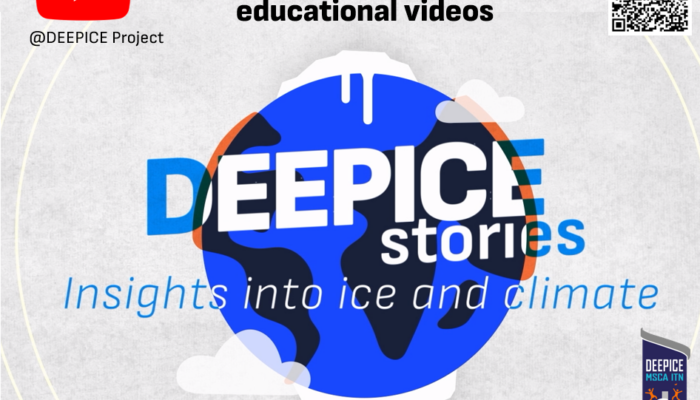Even before its publication, my partner stumbled over the book The Quickening by Elizabeth Rush on Twitter and send it to me. In this book, Rush describes her journey to Thwaites Glacier and – as I was very curious about it – I bought it immediately after its release. It is not only documentary work about the journey, but also a meditation on responsibility, motherhood and life in a world of chang ...[Read More]
Climate Change & Cryosphere – Can the smallest ice make the greatest impact?
The cryosphere comprises all the ice on Earth, from glaciers in Antarctica, icebergs floating in the ocean, to millimetric ice found in the soils. Soil can hold ice wedges and ice lenses, but there are small ice reservoirs that are usually overlooked: the pore ice. Pore ice is an unknown compartment whose role regarding matter degradation is yet to be determined… stay with us and you will see that ...[Read More]
Blue ice in Antarctica: small extent, big science
Kggk kggk kggk – the sound of crampons accompanies me. A thin layer of snow covers the slippery ice while I pull a sled. As I wipe my hand over the snow, underneath, a blue color glitters in the sun (Figure 2). In the last days it has been snowing in the White Desert (Antarctica). All blue ice we could see before is temporarily covered by a thin blanket, perfect to pull a sled. However, this snow ...[Read More]
Image of the week: The Song of Sastrugi
Sastrugi are significant features in glaciology, providing valuable insights into wind patterns, snow dynamics, and surface processes. So although at first sight they may be easy to walk over (quite literally), their patterns and features can tell us more than you might think, so next time take a moment to look and see the story they have to tell… The Song of Sastrugi The wind’s icy b ...[Read More]
Cryoscientist life stories – an interview with our incoming deputy division president, Daniel Farinotti
We would like to introduce Daniel Farinotti to you, our Cryosphere Division incoming deputy president, who will take over as division president from 2025-2027. For that, our Cryosphere Division outreach officer, Larissa van der Laan, interviewed Daniel at the EGU General Assembly in April 2024, to ask him a few questions about himself and his view of this exciting role within the EGU. Larissa: Hi ...[Read More]
Cryo Comm – Explaining ice core science with “cool” educational videos

Mastering the art of science communication is becoming more and more important, especially in the realm of climate science! Training and practice can really help PhD students acquire this skill. With this in mind, the DEEPICE project, a training network of 15 PhD students, has developed a wide range of activities to train the DEEPICE students, including the creation of a series of educational vide ...[Read More]
You thought it was over? Here’s more on the 2023 Antarctic sea-ice extent record low

In November last year (see this post), we promised to provide you an update of what happened with Antarctic sea ice during the year 2023 – a year of an exceptionally low extent. In this post, we try our best to discuss the conditions that lead to (part of) the recent loss in Antarctic sea ice, including atmospheric and ocean processes. How sea ice usually works… One of the ways scientists h ...[Read More]
Are you ready for EGU 2024?
Are you planning on attending the EGU General Assembly happening very shortly in Vienna, Austria? – We are! As every year, we are very much looking forward to connecting with you during the various events and are very excited to already share some of our highlights with you today. Keep an eye open on social media for daily cryosphere highlights during EGU! Would you like to meet us? Find us ...[Read More]
The joy of collecting snow meltwater: a problem-solving hunt for meltwater in Northern Finland
We know that climate change is affecting many aspects of what we have considered “stable” throughout a long period of modern times. One of many impacted and changing factors is snow and thereby also snow meltwater. One way to study meltwater is to trace it by the usage of stable water isotope signals and we plan to use it by asking: Are we underestimating the portions of snow meltwater in differen ...[Read More]
Did you know? We can see what’s going on inside an ice shelf using geophysics!
Understanding what is going on inside an ice shelf is important for many reasons. But mostly, it allows us to better understand their contribution to sea level rise, and to understand how they are changing and evolve over time, with our changing climate. Geophysical methods offer a means to be able to see inside an ice shelf, and get an idea of their properties. Read on to find out a bit more abou ...[Read More]








